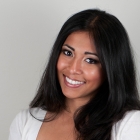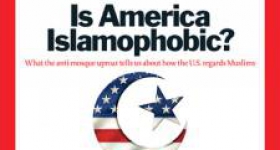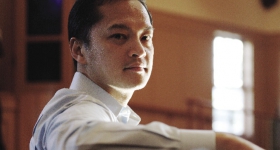Assistant Secretary Howard Koh (right) walks with Secretary of Health and Human Services Kathleen Sebelius. Source: US Department of Health and Human Services
When it comes to healthcare access and reform, the Asian
American and Pacific Islander (AAPI) community has presented challenges for a
government that has never before dealt with such a diverse and rapidly shifting
ethnic group.
The AAPI population can be traced to 52 different countries.
According to the 2010 US Census, they make up 5.6 percent of the total US
population, and have grown by 46 percent from 2000 to 2010, the largest increase
of any major racial group.
These shifting demographics and diverse subgroups have also led
to considerable health, information and language barriers for many AAPI communities
on the ground.
Several grassroots AAPI groups now question whether the
government will conduct an effective outreach to overcome these barriers when
it implements health care reform.
“The challenges I see are due to the diversity in the AAPI
community,” said Pysay Phinith, an advocate at the Bay Area-based Asian
Community Mental Health Services (ACMHS). "I don’t think the system is
ready or equipped to handle that. In our (Alameda) county alone, we have 80 languages. How
are they planning on supporting these languages?”
The Affordable Care Act (ACA), which President Barack Obama signed
in 2010, aims to address these needs. The largest overhaul of our healthcare system
in the nation’s history, the new law looks to lower the cost of healthcare,
increase the number of healthcare providers, and hold insurance companies accountable
for improving the quality of care and extending coverage to 32 million more people.
According to the Asian and Pacific
Islander American Health Forum, more than one in six Asian Americans, and one
in four Native Hawaiians and Pacific Islanders, are uninsured, and even more
are underinsured.
With full implementation of the
healthcare law set for 2014, the government is working to address the AAPI community’s
complex healthcare needs.
Dr. Howard Koh, the Assistant Secretary Health and Human Services, called this a “critical time
for outreach and education for better insurance, better care, better
prevention, and better public health for millions, including AAPIs.”
“Over 2 million uninsured AAPIs will be able to get
affordable coverage," Koh said.
But what will the Affordable Care Act look like in practice
and how will it directly address access to healthcare and language access
issues? Many advocates who work directly with AAPI communities harbor skepticism
on how well the law will be implemented.
Phinith of ACMHS gives the example of a client, a Cambodian
woman and her child, who had substantial language access and cultural barriers
to healthcare. The woman was a recent immigrant who had limited English
capabilities and no familiarity with the systems in this country. Phinith recalled
how it was difficult for her to understand even after the materials were
interpreted to her in the Cambodian language.
“She couldn’t understand the explanation of how the system
works, the medical terminology was so confusing for her,” Phinith said. "She
didn’t understand the system enough to even comprehend the translations.”
Phinith and ACMHS worked with the woman very closely and
provided direct and individualized service to fill these gaps in understanding.
A year later, her life had improved dramatically and her young daughter was
able to get access to health services through the work of ACMHS.
Phinith pointed out that one solution to addressing
cultural, informational and language barriers within AAPI communities is to
support the advocates that serve them.
"You can’t just be a typical clinician, as you can see in
the example of my Cambodian client,” she said. “There
are many others examples like this. You have to be the voice of the community.
We don’t have enough culturally or linguistically competent professionals in
this field to do that.”
Angelo Ercia, the Health Equity Program Supervisor at
Community Health for Asian Americans, echoed Phinith’s sentiments.
“It's important to include and hire
people from the communities themselves who are bicultural and bilingual to
explain complex aspects of ACA,” Ercia said. "It’s the grassroots efforts
that will be successful in outreaching to communities that are isolated,
monolingual and are not part of the American mainstream."
The crucial element of healthcare education and outreach
should not occur in a vacuum or be a one-time effort, according to Ercia.
“These communities aren’t
going to get it,” he said. “You need additional opportunities to learn about
the complexities of healthcare.”
Dr Koh, the assistant secretary, said he is aware of these grassroots
concerns.
“People of AAPI background
may not feel trust in the system,” he said. “Some simply don’t understand what
they are supposed to do and may have trouble understanding the forms and the
medicine given to them. Health literacy is needed if we want to break the
current cycle of crisis care.”
Crisis care refers to
those who seek medical attention only during an emergency.
Dr. Koh said the Department of Health and Human
Services is taking health access and language access issues seriously.
In April the
department released enhanced standards for healthcare providers called the “National
Standards for Culturally and Linguistically Appropriate Services.”
These standards,
which were originally released in 2000, sent the message that healthcare
providers had to be culturally and linguistically accommodating. The 2013 enhancements
stressed the need to recruit and support a culturally and linguistically
diverse workforce that is responsive to different populations in their service areas.
It also asks providers to partner with the community to ensure their own
cultural and linguistic competency.
Dr. Koh also
pointed out that the department is working to increase the language diversity
of healthcare materials and outreach. By late June or early July, the
department will have a 24-hour call center, which will be available in over 150
languages. They will also launch a media campaign this summer via television, Internet, and other news media, and implement outreach
efforts to the more than 1,100 community health centers throughout the US.
When it comes to addressing the gaps in services on the ground, Dr. Koh said
his department has increased funding to the more than 1,100 community health
centers, many of which serve AAPI populations.
The White House estimates that this added
funding will enable the health centers to double
the number of patients served from 19 million to nearly 40 million by 2015.
Only time will
tell if healthcare reform will actually improve care for AAPIs in 2014 and
beyond. For now, there is substantial work being done to envision better care
and better disease prevention for all Americans, but we are still waiting for
that vision to become reality.










Comments